Origins of Humankind, Part I: The Big Picture
It begins! The Origins of Humankind is a series exploring our shared human story. Expect world-leading experts, cutting-edge science, and storytelling that speaks to everyone.
Welcome to the first episode of the Origins of Humankind, produced by On Humans Podcast and UC San Diego’s Centre for Academic Research and Training in Anthropogeny (CARTA).

In this sweeping first episode, we cover the entire planetary backstory of human existence – from the origins of life to the climate change that kickstarted human evolution. Our expert guide on this journey is Tim Coulson, the Head of the Department of Biology at the University of Oxford and the author of A Universal History of Us.
You can now listen to the episode wherever you get your shows. Alternatively, you can keep reading for highlights.
Listen (1h04): Spotify | Apple Podcasts | Other Players
1. Made in Space?
How did life emerge? It remains one of science’s greatest unsolved problems. But we’ve got clues.
As Coulson explained, it probably began in warm waters linked to volcanoes (think oceanic vents or Icelandic baths). Long before digestive systems or photosynthesizing plants, life got its energy from the Earth itself. This allowed for the first jitters of life to take hold.
But if life’s energy was pulsing from deep within, the materials rained from afar. Or so goes an increasingly plausible hypothesis.
Take the Murchison meteorite that crashed in Australia in 1969. It carried over 90 amino acids, the raw materials of life. Back when Earth was young, such cosmic deliveries were constant. Our planet vacuumed debris as it orbited, stockpiling life’s starter kit from the space junk.
How early Earth cradled life, we don’t exactly know. But it didn’t do it alone. The seeds had fallen from the heavens.
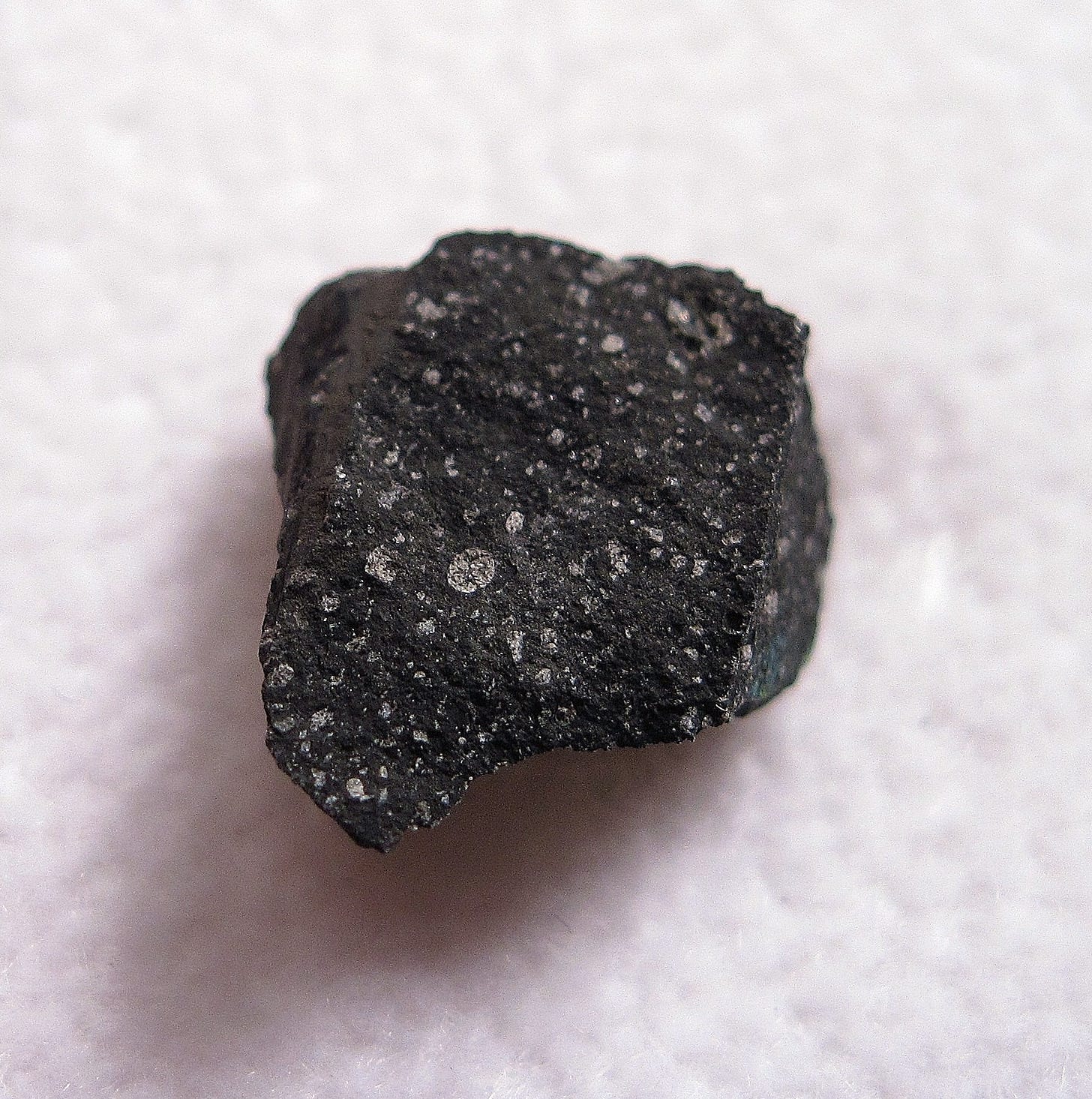
2. Why animals?
Early Earth had no oxygen in its atmosphere—which was good news for most living things: Oxygen is toxic stuff. Just think of rusting metal.
But change was coming. Long before plants existed, cyanobacteria began making food through photosynthesis. As every biology textbook explains, photosynthesis creates sugars by breaking CO₂ into carbon (which stays) and oxygen (which gets released). As Coulson explained, “The first global polluters were the cyanobacteria.”
As photosynthesis spread, Earth's atmosphere became filled with oxygen. This Great Oxygenation Event caused the planet's first mass extinction (anaerobic microbes still curse that day...).

But oxygen also supercharged energy production. The survivors learned to harness this toxic gas as powerful fuel. As Coulson puts it, this allowed life to "crank up" its metabolism and speed up operations. Like a historic city transitioning from horses to cars, these ancient organisms became far more complex.
First, one organism engulfed another, forming the first eukaryotic cells (think of modern yeast—still single-celled, but with nuclei and specialized structures). Later, cells began collaborating in organized groups, each type taking on specialized roles. Plants and animals stepped onto the scene of life, all powered by the toxic gas we call “oxygen”.
3. Tough Life
For 3 billion years, life was soft, squishy, and largely peaceful. Some predation might have happened, yes, but all animals were soft-bodied. This isn’t exactly a recipe for gladiatorial living. As Coulson explained, “You need hard parts to break into another animal.”
This era, sometimes called the “Ediacaran Garden”, ended with the Cambrian Explosion, which saw a sudden explosion in hard-bodied animals. The catalyst? A sudden abundance of calcium carbonate in the oceans allowed animals to build hard parts like shells, teeth, and skeletons. This didn’t only end the peace of the “Ediacaran Garden”. It also made life sturdy enough to leave the seas.
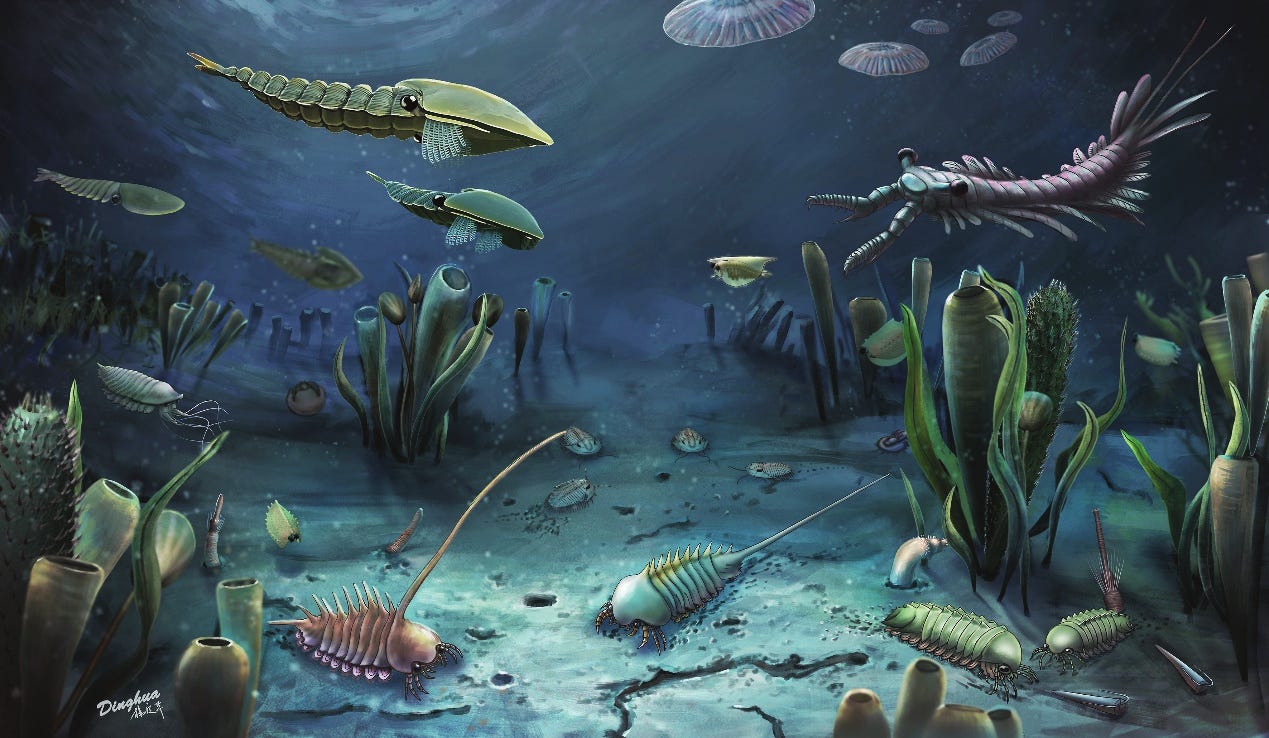
Arthropods, encased in calcium-rich exoskeletons, were the first pioneers to enter dry lands. With time, they evolved into all the millions of insects we know today. Meanwhile, in the seas, early fish were supported by another calcium innovation: bones. With time, these bony swimmers also ventured onto land, their fins gradually evolving into the four limbs of all tetrapods—from hippos to humans and from turtles to dinosaurs.
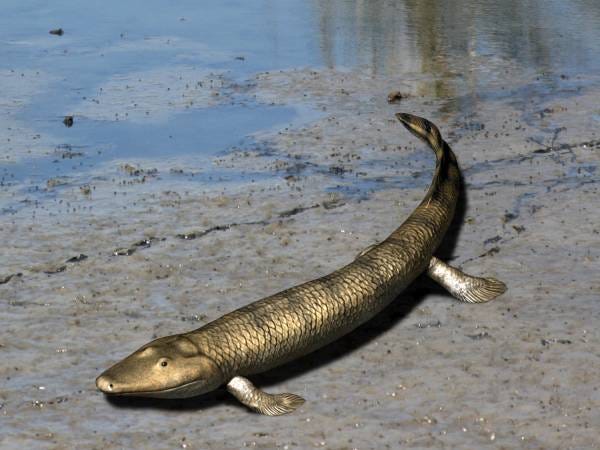
4. Our Phoenix Ancestors
Dinosaurs weren’t always Earth’s dominant tetrapods. Before their reign, our ancestors held the throne. Ancient synapsids—those pioneering "proto-mammals"—were to dinosaurs what dinosaurs are to us: the charismatic giants who ruled until a mass extinction wiped them out.
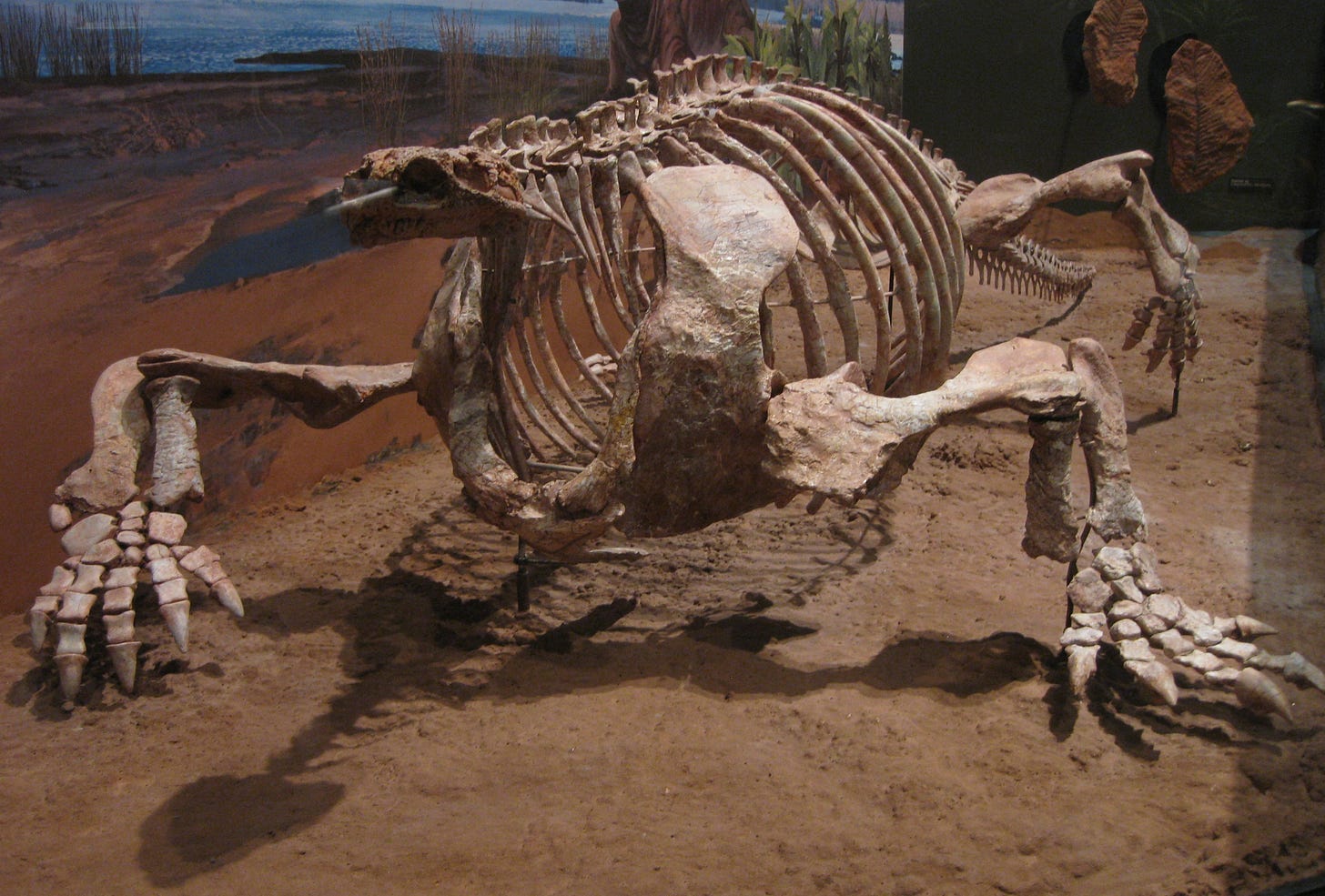
Of course, not all of them died. We wouldn’t be here if they did. (The same goes for dinosaurs. Birds wouldn’t be here if they all died.)
With time, these small survivors evolved towards the mammalian forms we know today. Evolution kept them small during the time of the dinosaurs, “shrew size” Coulson told me. But after the legendary asteroid impact 66 million years ago, the scene opened for mammals to grow in size.
5. Grande Finale
One curious branch of mammals evolved in the trees. After dinosaurs vanished, angiosperm forests flourished. In plainer English: fruits became abundant.
Some mammals specialized in this calorie-rich bounty. These were the first primates.
With nimble fingers and toes, early primates feasted on fruits with few predators to fear. "Ditto, snakes!" Coulson noted. (No Garden of Eden here, but this might explain our deep-seated fear of serpents.)

This lack of predators allowed evolution to embark on a new experiment: primate lives slowed down. Childhoods became longer, and deaths came later. As Coulson explains, “All primates have a slow life history compared to animals of a similar size.” With longer childhoods, brain development could intensify.1 Primate brains became the supercomputers of the animal world, packing huge amounts of neurons into a neat design. The legendary intelligence of apes and monkeys was taking shape.
In some ways, humans fit right into this picture. But in other ways, we are an oddity.
North and South America were joined around 3 million years ago. With the rise of the isthmus of Panama, warm ocean currents from the Pacific could no longer reach the Atlantic. This led to a cooler and drier Africa. Forests shrank. Grasslands expanded. And within a geological blink, the genus Homo appeared.2
It’s worth quoting Coulson in depth here:
“Our ancestors were forced to the ground as Africa dried out. You are now an animal adapted to live on fruit and leaves with a slow life history where it takes you a long time to raise your offspring—and now you are on the ground where there are things that can potentially eat you and are certainly evolving to eat you.“
But here’s the twist:
“Instead of evolving a faster life history or armor, we evolved larger brain sizes and more advanced technology.”
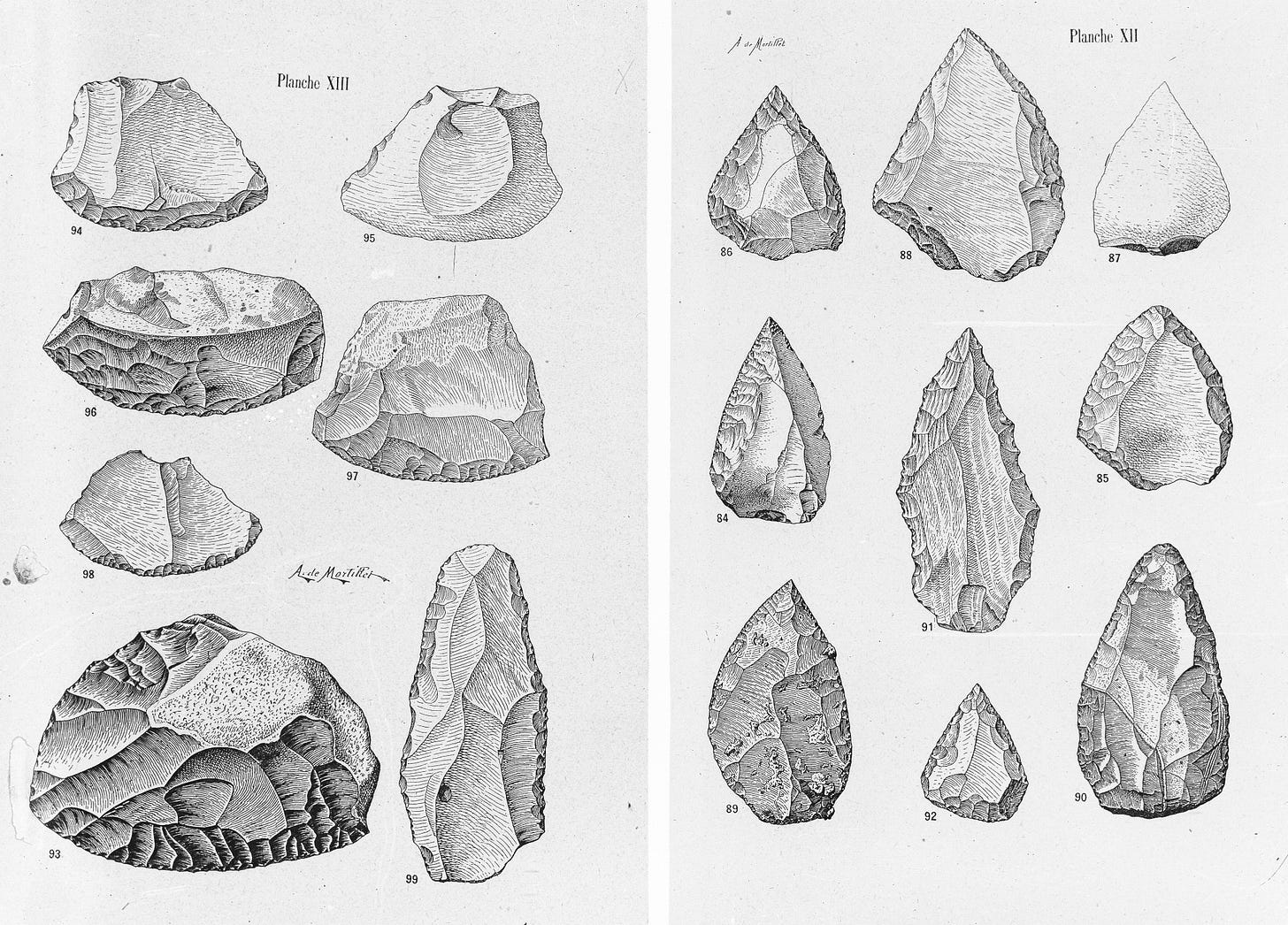
And this is a big deal. Our technology has made our nimble, slow, and relatively weak species into the most dangerous predator the world has ever seen.
“We became special because we were able to develop tools much faster than we could evolve morphological characteristics — we create spears much faster than we could evolve large claws. It meant that we could win every arms race that we got involved in.
The Earth has felt the effects.
“Some people don't like this argument, but for me it's pretty compelling: if you look at the spread of humans around the world … every place we arrived, we killed off the large animals. It happened again and again. So about 75,000 years ago, there were 57 terrestrial animal species that weighed over a ton. There are 11 alive now. Very few other predators are able to drive their prey extinct. We are really unusual. And the reason we are unusual is because we have been able to evolve tools or adapt tools more quickly than our prey can respond.”
We are the only species to shape the fate of others on a planetary scale—not with fangs or claws, but with minds, stories, and tools.
And this is only the beginning.
In the next four episodes, we trace the human journey from our first steps on the savanna to the birth of language, fire, farming, and beyond. If you're curious where we came from—and where we might be headed—hit subscribe to follow the series.
This is all free—so do help spread the science!
Checkout also the series homepage for more materials on human origins from On Humans and CARTA.
See you next week!
This is one of the murkiest bits in the story. I’m skipping over many details. Do listen to the episode if you want all the nuance.
Some critical readers might note that some real-world gradualism gets hidden behind this way of telling the story. For example, bipedalism and terrestrial living had evolved much earlier. This is true, but as Coulson noted, the forming of the isthmus of Panama was a gradual process, too. Furthermore, Austrolopithecins still had many tree-living adaptations, making pure terrestrial living still a useful mark for the peculiarity of genus Homo. Overall, the “savanna hypothesis” has many caveats and should probably be renamed (e.g. “mosaic hypothesis”). This said, whether I’m talking to Chris Stringer, Ian Tattersall, Kristen Hawkes, or any other heavyweight, I keep hearing the same basic conclusion: the big picture stands stronger than ever.





https://open.substack.com/pub/abforbes/p/consider-yourself-extremely-special?r=yn8c0&utm_medium=ios